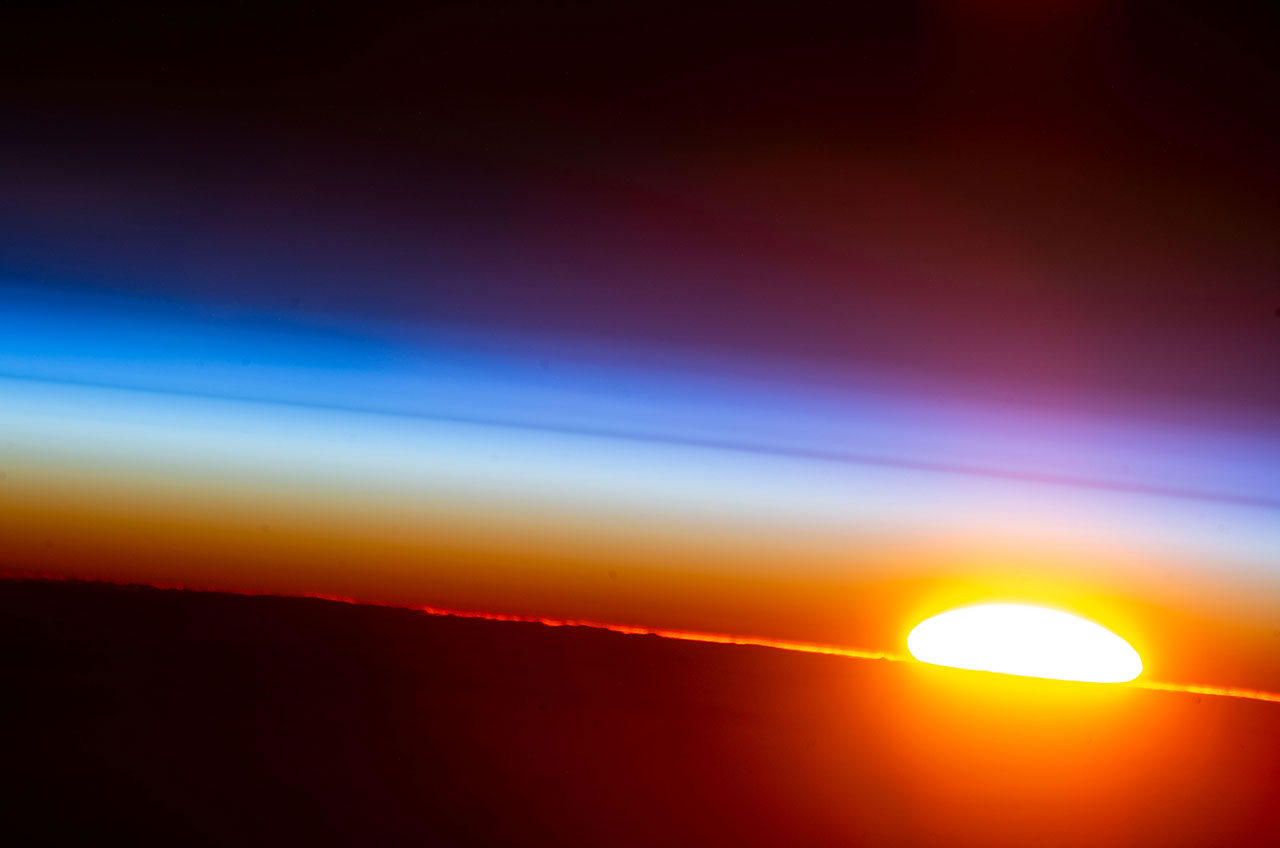Astronauts ring in New Year aboard space station to welcome 2022
There are 10 astronauts for the New Year on the International Space Station and China's Tiangong module Tianhe.

The astronauts and cosmonauts aboard the International Space Station are marking the New Year, becoming only the 37th crew in history to be in space as Earth begins another revolution around the Sun.
Expedition 66 crew members Raja Chari, Tom Marshburn, Kayla Barron and Mark Vande Hei of NASA, Matthias Maurer of the European Space Agency (ESA) and Anton Shkaplerov and Pytor Dubrov of Roscosmos marked New Year's Day as the space station circled the planet.
Just before the New Year, the crew celebrated together with a traditional Saarland dinner hosted by Maurer, who is from Germany.
"I wish you all a happy new year & all the best for 2022! Cosmic greetings & #Cosmic Kisses," Maurer wrote on Twitter alongside a time-lapse video of the dinner. "See you all next year!"
Related: 7 things the International Space Station taught us in 2021
"It is a privilege to have the perspective of seeing so many countries," said Marsburn in a NASA video sharing his thoughts about spending the New Year in space. "We can go from one side [of Earth] to another in just a few minutes and it truly gives us a feeling of unification for all human beings around the world."
"We get to see the sunrise many times a day, so thinking about the fact that people are waking up to a New Year each time we see that sunrise is pretty cool," added Chari.
Breaking space news, the latest updates on rocket launches, skywatching events and more!
Just in time for New Year's Eve & the next big dinner for many, here's a little time-lapse of the special Saarland dinner we enjoyed aboard the @Space_Station 😋🍴 I wish you all a happy new year & all the best for 2022! Cosmic greetings & #CosmicKisses. See you all next year!🎆 pic.twitter.com/H6OCx76U9cDecember 31, 2021
Traveling at 17,500 mph (28,000 km/h) at 260 miles (418 km) above Earth, the space station's crew experience 16 sunrises and 16 sunsets each day. The crew observes Greenwich Mean Time (GMT) aboard the orbiting outpost, so their strike of midnight took place 5 hours before the ball dropped in Times Square in New York City.
"I am looking forward to the next year," said Matthias. "All the science that we want to run here, all the experiments that will be a splendid start to the New Year!"
The Expedition 66 crew are the 22nd contingent to celebrate the New Year on the International Space Station. For the first time, though, they are not the only crew celebrating in space.
Elsewhere in Earth orbit, the three members of China's Shenzhou 13 mission, Zhai Zhigang, Wang Yaping and Ye Guangfu, are marking the day aboard their country's burgeoning Tiangong space station. The Chinese space station is expected to be completed in 2022.
In addition to the one Chinese crew and 22 International Space Station expeditions, 12 crews aboard the former Russian space station Mir and one crew aboard Skylab, the United States' first orbital workshop, were off Earth for New Year's.
Follow collectSPACE.com on Facebook and on Twitter at @collectSPACE. Copyright 2021 collectSPACE.com. All rights reserved.

Robert Pearlman is a space historian, journalist and the founder and editor of collectSPACE.com, a daily news publication and community devoted to space history with a particular focus on how and where space exploration intersects with pop culture. Pearlman is also a contributing writer for Space.com and co-author of "Space Stations: The Art, Science, and Reality of Working in Space” published by Smithsonian Books in 2018.
In 2009, he was inducted into the U.S. Space Camp Hall of Fame in Huntsville, Alabama. In 2021, he was honored by the American Astronautical Society with the Ordway Award for Sustained Excellence in Spaceflight History. In 2023, the National Space Club Florida Committee recognized Pearlman with the Kolcum News and Communications Award for excellence in telling the space story along the Space Coast and throughout the world.

